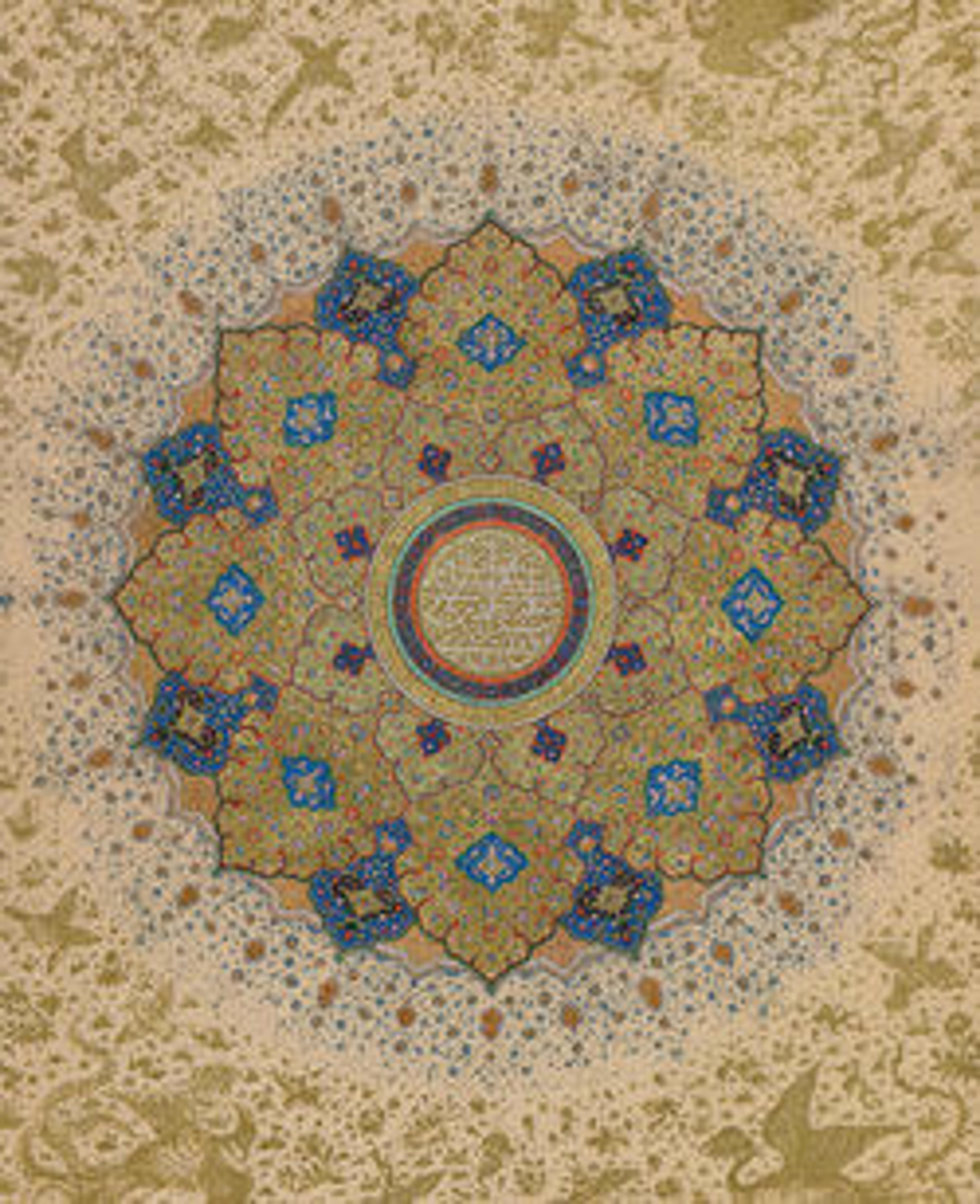Silk Velvet Designed by 'Ghiyath'
The beige satin background of this silk velvet panel was originally covered in shining metal threads, the remnants of which are still visible in some places. Luxurious textiles like this one were described by Europeans who traveled to the Safavid court. This piece bears the inscription "work of Ghiyath," referring to a designer who was attached to the Safavid court and served as a master weaver at the court of Shah 'Abbas I at Isfahan.
Artwork Details
- Title: Silk Velvet Designed by 'Ghiyath'
- Maker: Ghiyath (Iranian, Yazd, born ca. 1530)
- Date: second half 16th century
- Geography: Attributed to Iran
- Medium: Silk, cut and voided velvet with continuous floats of flat metal thread
- Dimensions: Textile: L. 25 3/4 in. (65.4 cm)
W. 13 1/4 in. (33.7 cm)
Mount: L. 30 in. (76.2 cm)
W. 18 1/2 in. (47 cm) - Classification: Textiles
- Credit Line: Purchase, Joseph Pulitzer Bequest, 1952
- Object Number: 52.20.13
- Curatorial Department: Islamic Art
More Artwork
Research Resources
The Met provides unparalleled resources for research and welcomes an international community of students and scholars. The Met's Open Access API is where creators and researchers can connect to the The Met collection. Open Access data and public domain images are available for unrestricted commercial and noncommercial use without permission or fee.
To request images under copyright and other restrictions, please use this Image Request form.
Feedback
We continue to research and examine historical and cultural context for objects in The Met collection. If you have comments or questions about this object record, please contact us using the form below. The Museum looks forward to receiving your comments.
